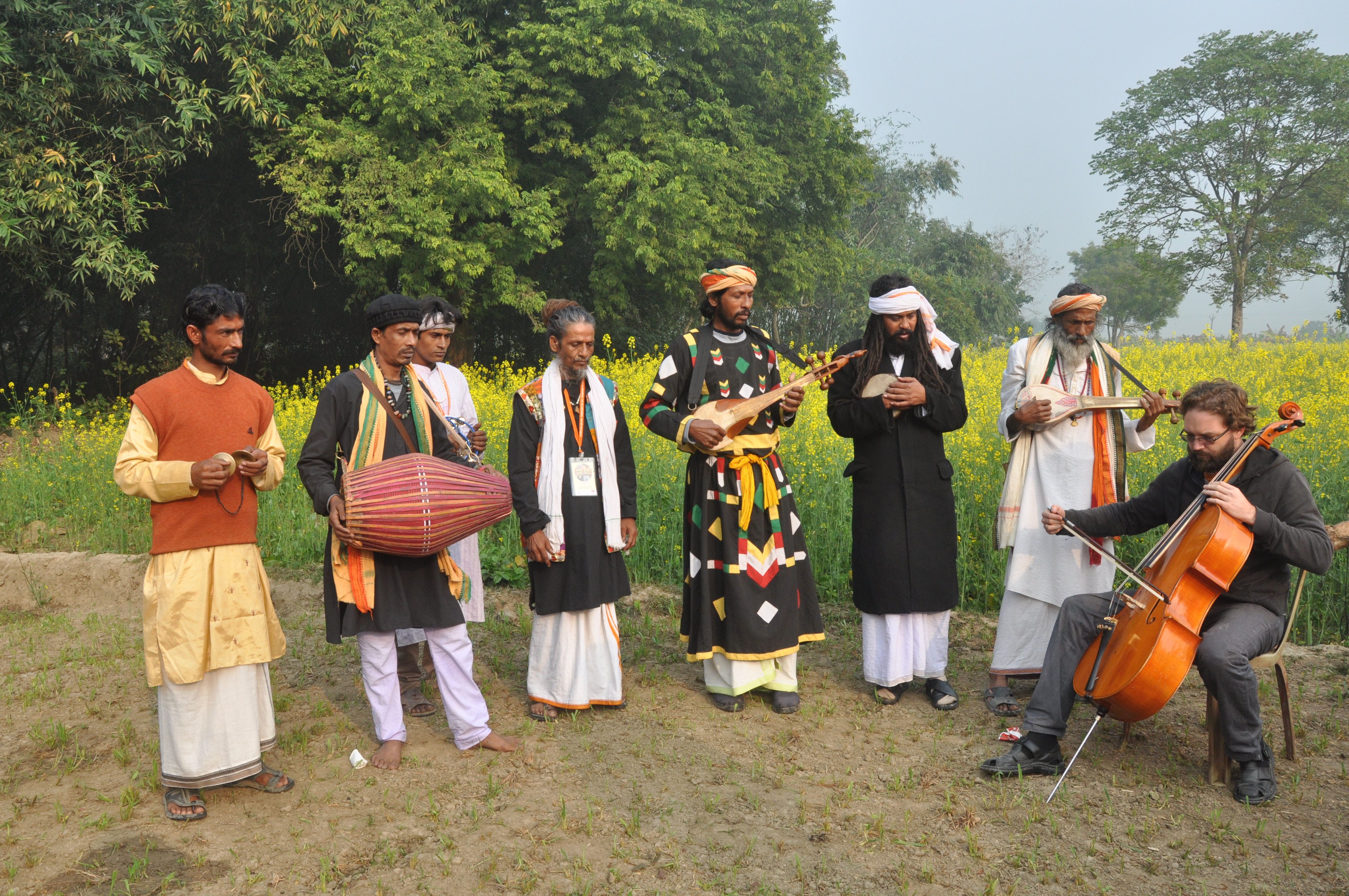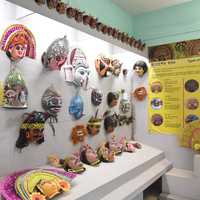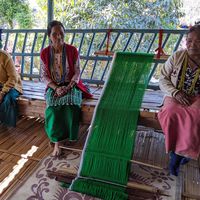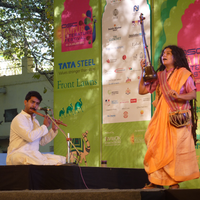Festivals - a powerful vehicle of cultural diplomacy

As part of culture360's ongoing Call for articles 2023, Madhura Dutta writes about harnessing the power of festivals for cultural diplomacy in India.
As creativity transcends borders, culture has been used as a resource to build social cohesion and multilateral cooperation through intercultural dialogue and exchanges, whilst supporting mutual understanding and appreciation for cultural diversity and plurality. Cultural expressions are hence powerful tools to build connections, foster empathy and empower communities. The “exchange of ideas, information, values, systems, traditions, beliefs, and other aspects of culture, with the intention of fostering mutual understanding” has been defined by Milton C. Cummings, an American political scientist and author, as ‘cultural diplomacy’.
In practice, cultural diplomacy has existed for centuries, the Silk Route being one of the most well-known examples of global cultural exchange since ancient times. The inter-country trade-related travels along the Silk Route led to cultural interactions between Europe and Asia, free flow of ideas, and transformation of civilisations. It has been documented by researchers that to strengthen cross-border trade relations across the Silk Road countries, fairs, festivals, and regular marts used to be organised for commercial networking and marketing. Overall, the desire of mankind to travel and explore has created cultural diplomats with legacies of artistic, religious, scientific, and intellectual cooperation.
Of the varied expressions of culture, the universality of music makes it an excellent vehicle for promotion of the ideas of pluralism, universal love, and celebration of humanity. Music has played a major role in bringing together communities from all corners of the world, irrespective of class, religion, and ethnicity, through unique models of ‘free for all’ community festivals.
The International Peace Music Festival and Cultural Exchange
An International Peace Music Festival, ‘Sur Jahan’, having its genesis in Kolkata, was conceived by Banglanatak dot com, a national organisation working with culture and development. The three-day festival was launched in 2011 to bring the lesser known and marginalised folk musicians of West Bengal on a common platform with other international folk-musicians and performers. The broader aim of the festival has been international recognition of the universality of traditional folk music, along with equity and social justice for undervalued rural indigenous artists.
The festival was designed to promote international cooperation for peace, solidarity and celebration of diversity, and has been a platform for multiple actors — musicians, cultural diplomats, festival curators, journalists, writers, photographers, teachers, students, local governments, and citizens, across borders. It brings together musicians and artists from all over the world, many from countries laden with conflict, discrimination, and disruption such as Afghanistan, Syria, Egypt, and lesser-known countries such as Réunion Island and Burkina Faso, alongside those enjoying freedom of expression and creativity.
1. Sur Jahan Festival's Grand Finale with all artists on stage at Kolkata in 2020 © Banglanatak dot com
The festival has hosted more than 100 musicians and performers from over 30 countries embodying distinctive cultural identities of people beyond political, social and religious divides. It has witnessed a fascinating amalgamation of diverse musical heritages from different parts of Asia (Bangladesh, Tajikistan, Azerbaijan, Afghanistan, Iran, South Korea, Cyprus), Europe (Denmark, Spain, Tunisia, Sweden, Portugal, Hungary, Czech Republic, Italy, Poland, Finland), Africa (Egypt, Syria, Senegal, Morocco, Burkina Faso, Cape Varde, Réunion Island), UK (Scotland, Northern Ireland), the USA, Russia, Brazil, etc. The Bauls, or the eastern Sufi musicians and wandering minstrels, from India and Bangladesh have stirred the nostalgia of united Bengal; European musical bands who practise, reinterpret and revitalise folk music have presented unique traditional and modern pieces enthralling the listeners; women singers of Iran who are forbidden to perform in public in their homeland have mesmerised audiences; an all women multicultural group from Denmark collaborating across traditions, languages, nationalities, and religions have presented the beauty of musical diversity; the Dervishes of Egypt and Syria have kept the audience spellbound.
Cultural democracy underpins the concept of the festival— a free for all annual event, with the tagline of ‘Music for Peace & Music for All’. Its first edition was supported by the European Union and organised in partnership with different international embassies. Typically, 5 to 6 international bands and 3 national bands would participate in each edition. The three-day festival has a unique format where it includes daytime workshops and evening stage concerts for all participating teams. The workshops facilitate spontaneous interactions through musical dialogues and knowledge exchange on distinctive musical traditions, cultural evolution and contemporisation, unique traditional musical instruments, stories of revival, etc. These sessions are informal, and provide unrestrained spaces for performers, musicians, music lovers, and audiences at large to interact with one another, know about their respective cultures, jam together, and enjoy the diversity and confluence of creativity in one place. The stage concerts present three teams every evening.
In the city of Kolkata, one of the foremost cultural hotspots in the country, this young festival of Sur Jahan emerged as a one-of-its-kind celebration of openness, joy and friendship through music. The festival has successfully continued for over a decade now, delighting thousands of participants every year. A vast range of musical traditions have been presented — Scandinavian, jazz, ethnic and world music, Hungarian folk, Blues of Réunion Island, Celtic folk music, Baul music of West Bengal, Manganiyars and Langas of Rajasthan, and many more. The bonhomie it has created over the years remains fresh in the hearts of those who came together at this platform.
2. Langa Musicians from Western Rajasthan © Banglanatak dot com
Village Festivals as Spaces of Cross-Cultural Collaborations
The cultural relationships and networks that emerged from the Sur Jahan festival also led to new local festivals in the villages of West Bengal. The village communities of different folk music genres and folk art started hosting Baul Fakiri (Sufi music of eastern India) festivals in Nadia, Birbhum and Bardhaman, a Bhatiyali (river songs of boatmen of West Bengal and Bangladesh) festival in the Sundarbans, a Bhawaiya (folk music of sub-Himalayan belt of north-east India) festival in Jalpaiguri, a Jhumur (tribal folk music) festival in south Bengal, etc., welcoming visitors from all over the world.
These festivals provide an opportunity to bring the cultural wealth of Bengal's villages to the fore, and instill pride and recognition in the minds of the otherwise underprivileged artists through exposure, collaboration, mutual appreciation, and creative exchanges. While the rural musicians come to perform in the city, the international musicians also travel to their villages to collaborate and perform in different festivals of the village. These village musical programmes not only entertain local audiences but also serve as a driver of social integration, mutual respect and cultural appreciation, exchange and innovation.
The collaborations have resulted in an expanding web of multicultural, multi-lingual, and multi-genre artists, who collectively advocate for peace and tolerance, cultural diversity, and shared experiences that lead to global manifestations of local cultures. For example, several musicians from Denmark, Czech Republic, Hungary, Switzerland, Sweden, Northern Ireland, Argentina, Russia, etc., participated in different village festivals and presented collaborations with the rural folk artists. Over time, the village festivals, held annually, have become popular locally, nationally, and internationally, turning the rural habitats into music and cultural destinations for tourists, music lovers, and performers.
3. International Collaboration at Baul festival in Gorbhanga village, Bengal © Banglanatak dot com
Today, these festivals also showcase local arts and crafts, thus creating the scope for cultural awareness about a place, its people, and their society, in diverse environments. Along with the much-awaited Sur Jahan, at present there are about 15 popular village festivals in Bengal that the communities organise as part of rural cultural tourism.
Way Forward
With human lives under threat from global climate change and pandemics of unprecedented scale, human connections, shared responsibilities, and a sense of belonging to a world of united resilience are becoming fundamental components of our survival response. Alongside the ever more critical economic and social issues and discourses on policy, strategy and governance, another world of creativity and dialogue is operating in parallel to pull people out of isolation. Festivals celebrating and sharing our cultural diversity can indeed inspire togetherness and forge a common identity of humankind.
Cover Image: Musicians from Denmark and Bengal collaborating at Sur Jahan © Photo: Banglanatak dot com
About the Author
Dr. Madhura Dutta is a development sector professional, working in the area of culture and development for two decades. She is also a freelance writer.
Similar content
posted on
10 Apr 2013
from - to
11 Mar 2012 - 15 Mar 2012
from - to
21 Oct 2015 - 25 Oct 2015
from - to
05 Jun 2019 - 09 Jun 2019









